|
Jessica Piora & Yuichi Kobayashi
Komoro Kaikoen: Autumn Leaves and Castle Ruins

What is the best place to enjoy the autumn red leaves in Japan? Komoro Kaikoen, a municipal park in Nagano is a great candidate. Kaikoen translates as the garden of retrospection, and as such, it is a place for reminiscing. In 1554 location was a fortress was later turned into a castle. Over the years, many lords took control of it. Finally, in the Meiji Restoration in 1871, it was destroyed. Kaikoen is great for history enthusiasts, art fans (the park is currently hosting a photography exhibition), and nature enthusiasts.
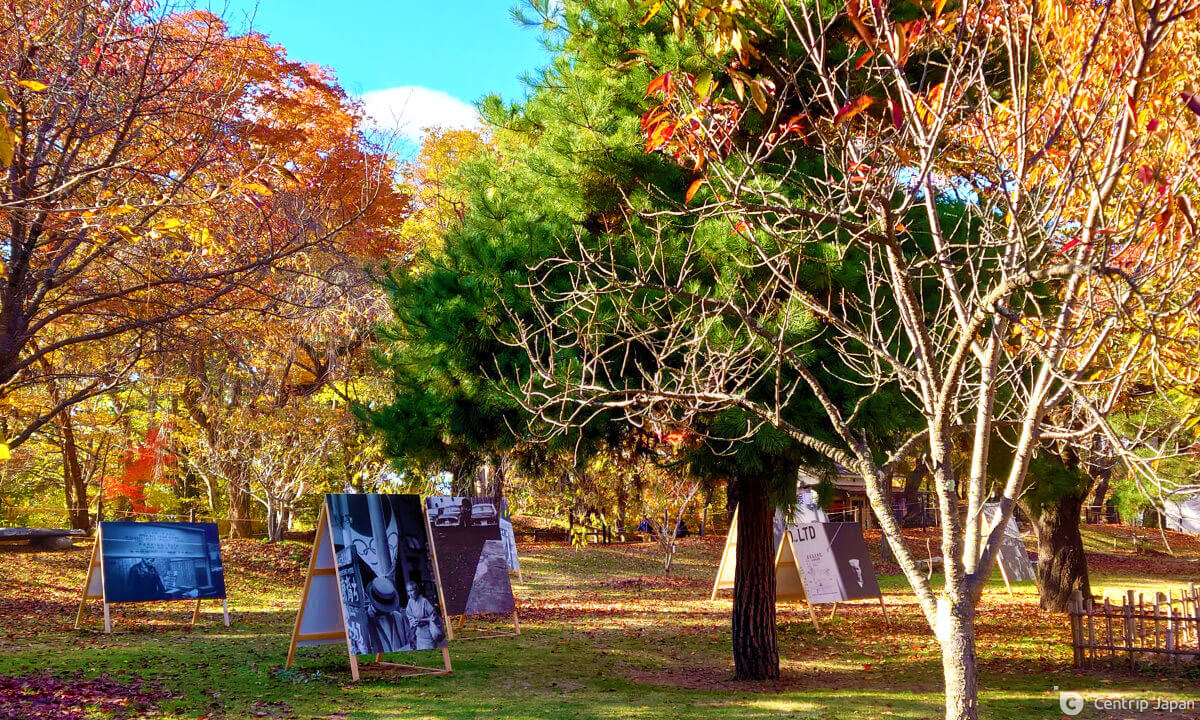 Photography exhibition in Kaikoen
Photography exhibition in Kaikoen
If you want to see the beautiful autumn leaves that characterize autumn in Japan, this is an exceptional location. The park is stunning. Here you can take a walk and fully appreciate the beauty of this season.
Komoro
Komoro is a small town (of 40,000 inhabitants) located in Nagano prefecture. It is the perfect destination for people who enjoy nature and old atmospheres. The municipal park surrounding the ruins of an old shogun castle is the ideal location for those who wish to learn more about the old Shogunate days, and the streets and cafés will take you back to the Showa era.
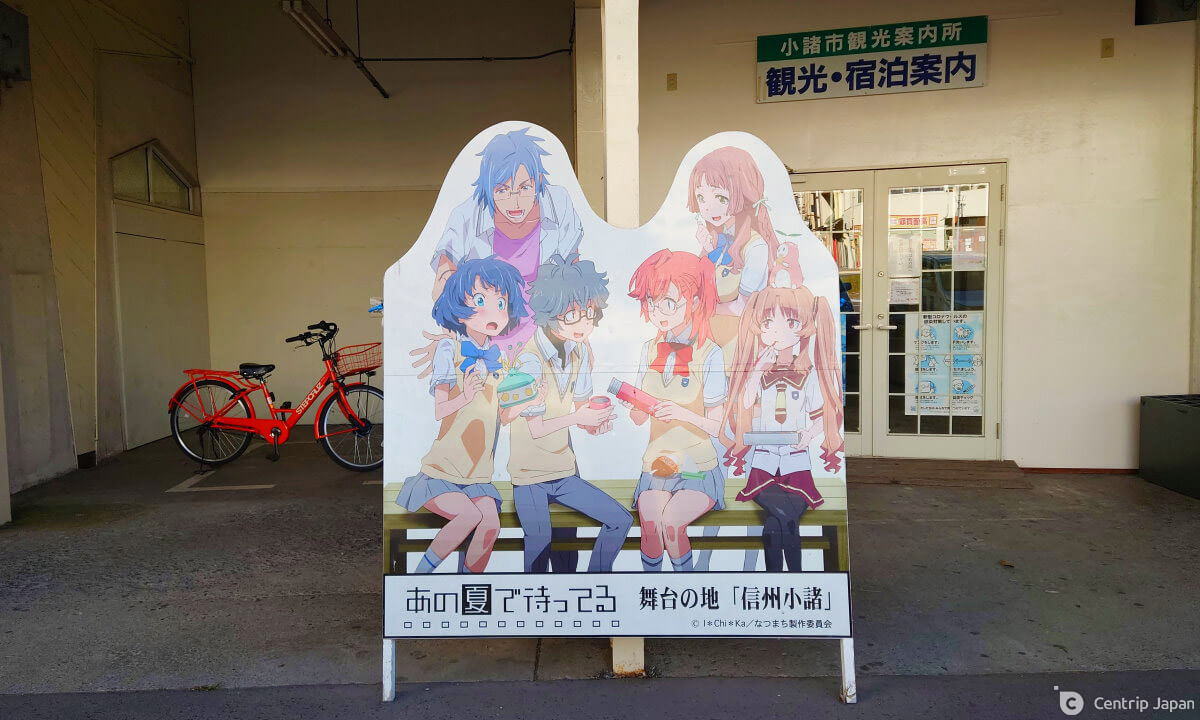 Ano Natsu de Matteru is an anime set in Komoro!
Ano Natsu de Matteru is an anime set in Komoro!
To reach Komoro from Nagoya Station take the Shinano line to Nagano. From Nagano, get on the Testudo line for Komoro and get off at Komoro station. The park is right next to the station! To visit Kaikoen, you need to pay an entrance fee of 200 yen.
Kaikoen
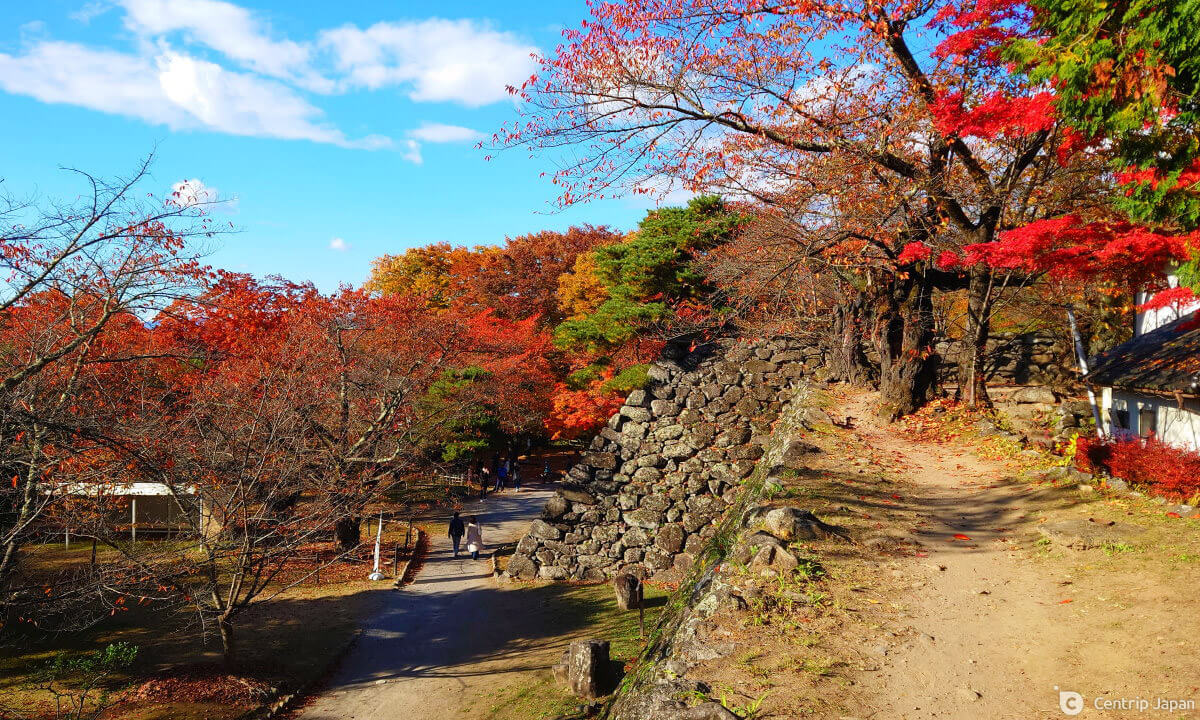 Take a walk
Take a walk
Kaikoen is a beautiful municipal park surrounding the ruins of the old castle. The park is popular among locals who come to the park for their morning walk, and you will notice that it has plenty of visitors all year round. In Japan, enjoying the koyo (Autumn Leaves) is a widespread activity, much like the tradition of hanami (Cherry blossom viewing) in spring. The best way to enjoy koyo is by taking a walk in a beautiful park. In Kaikoen, the autumn views are spectacular, but it is stunning all year round.
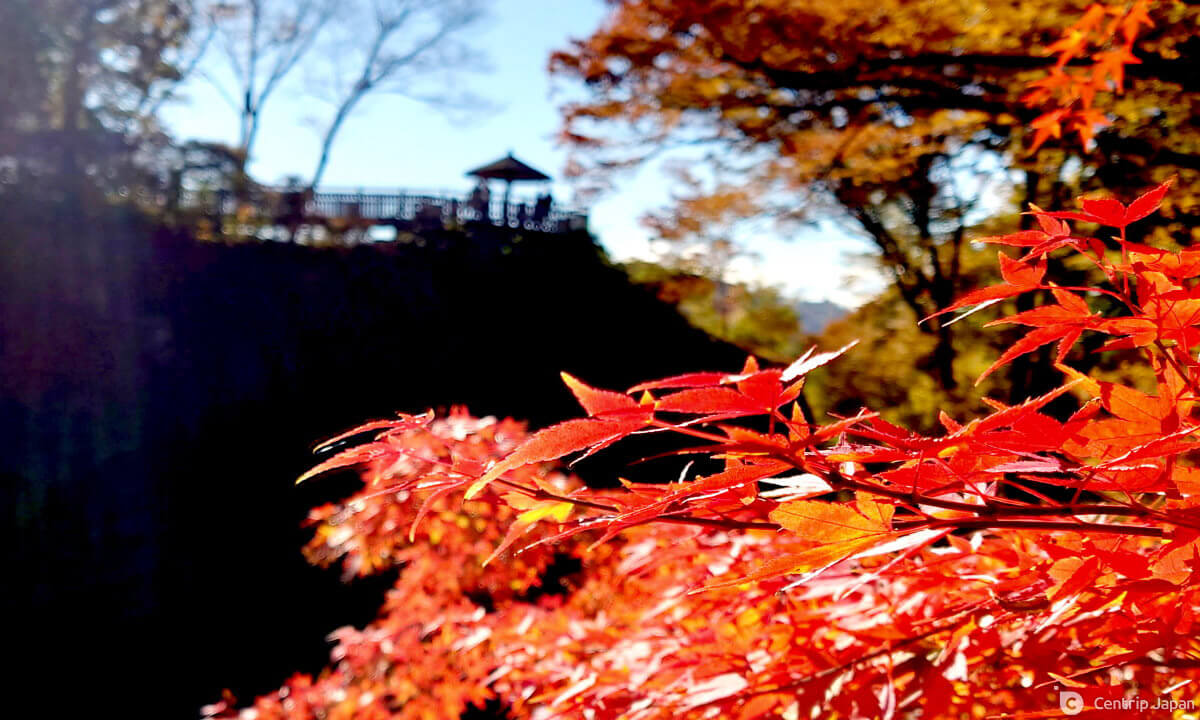 Kaikoen, observatory and red leaves
Kaikoen, observatory and red leaves
The park is currently hosting an art exhibition that features many photographs. This is Boat by Kensuke Koike.
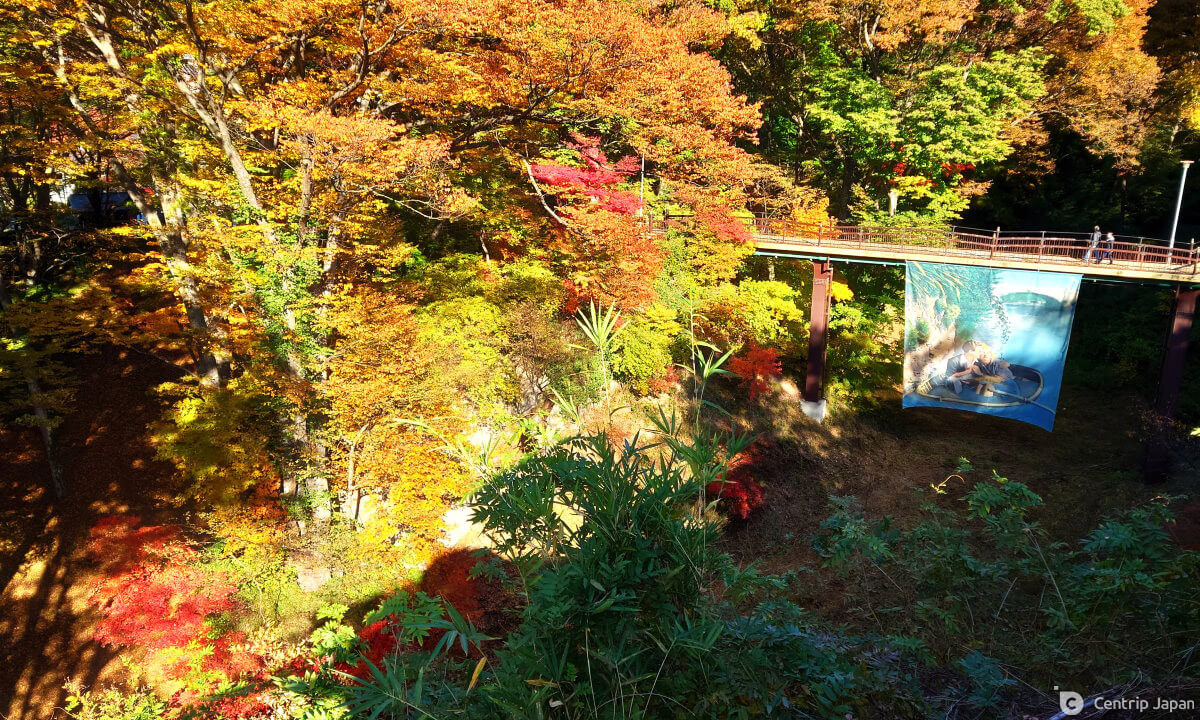 Boat, art in the park
Boat, art in the park
Ruins of the Castle
As you walk around the park, you will see the ruins of the castle and signboards explaining their history and relevance.
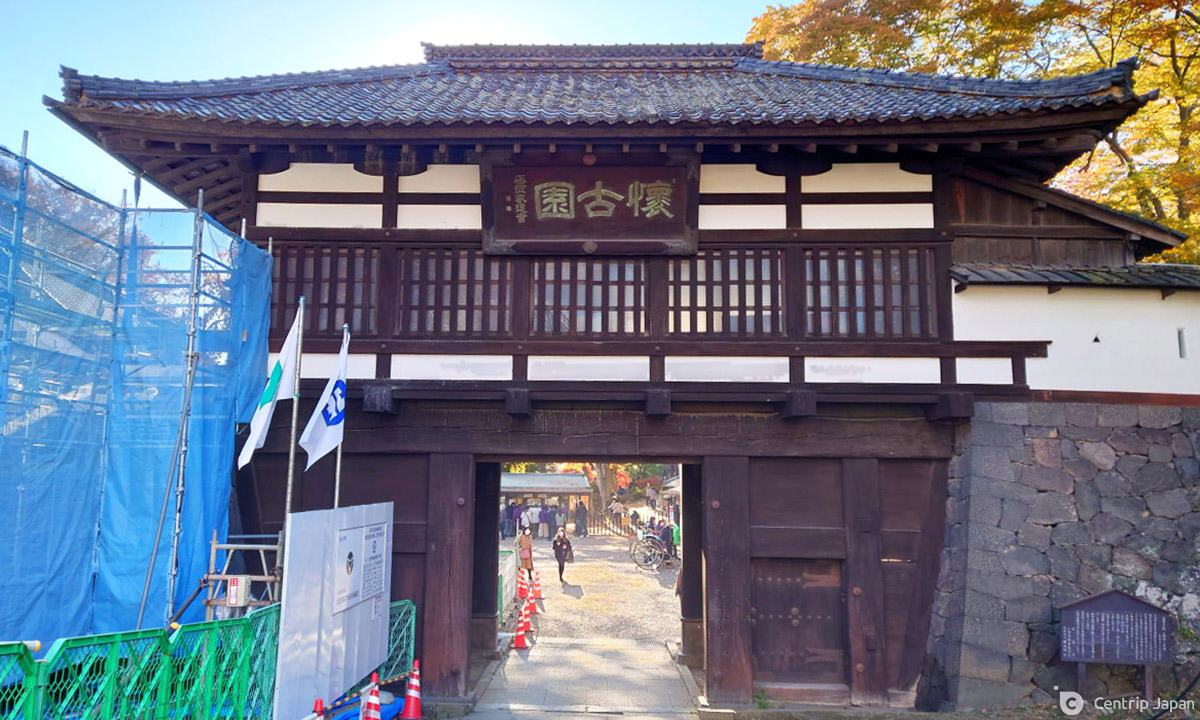 Entrance
Entrance
You can see the remains of the old castle gates and towers.
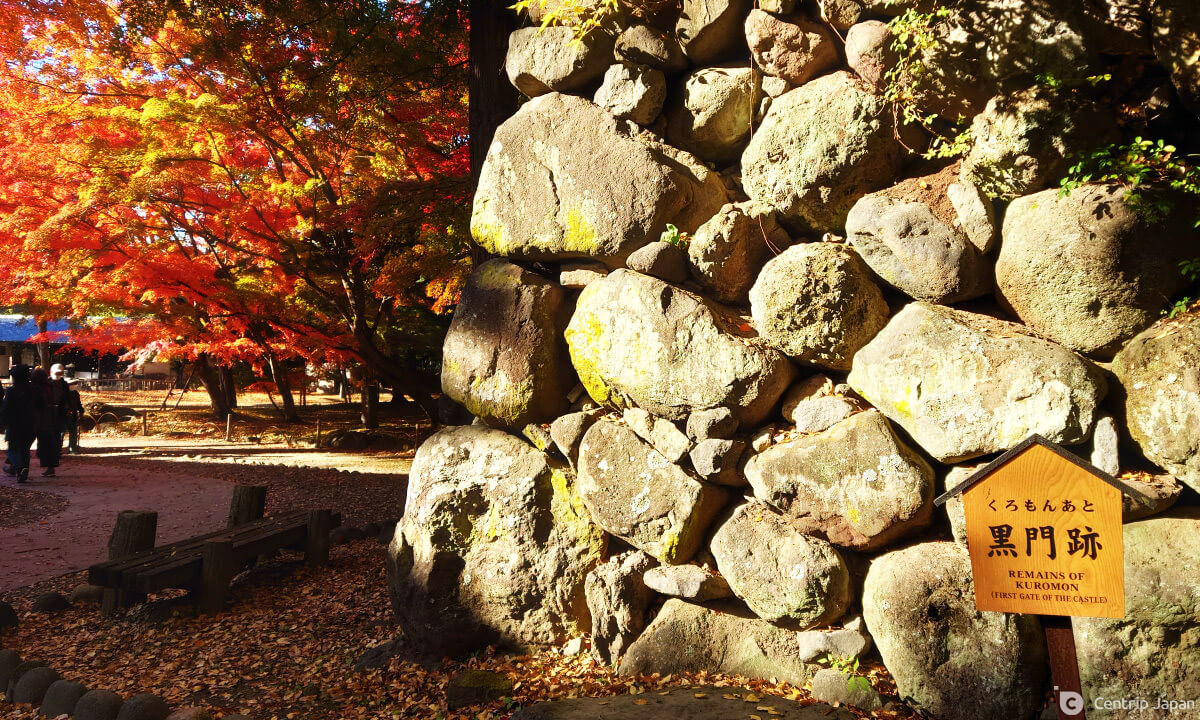 The remains of the first gate of the castle
The remains of the first gate of the castle
This small building was the armory. There is an ongoing photography exhibition inside the building.
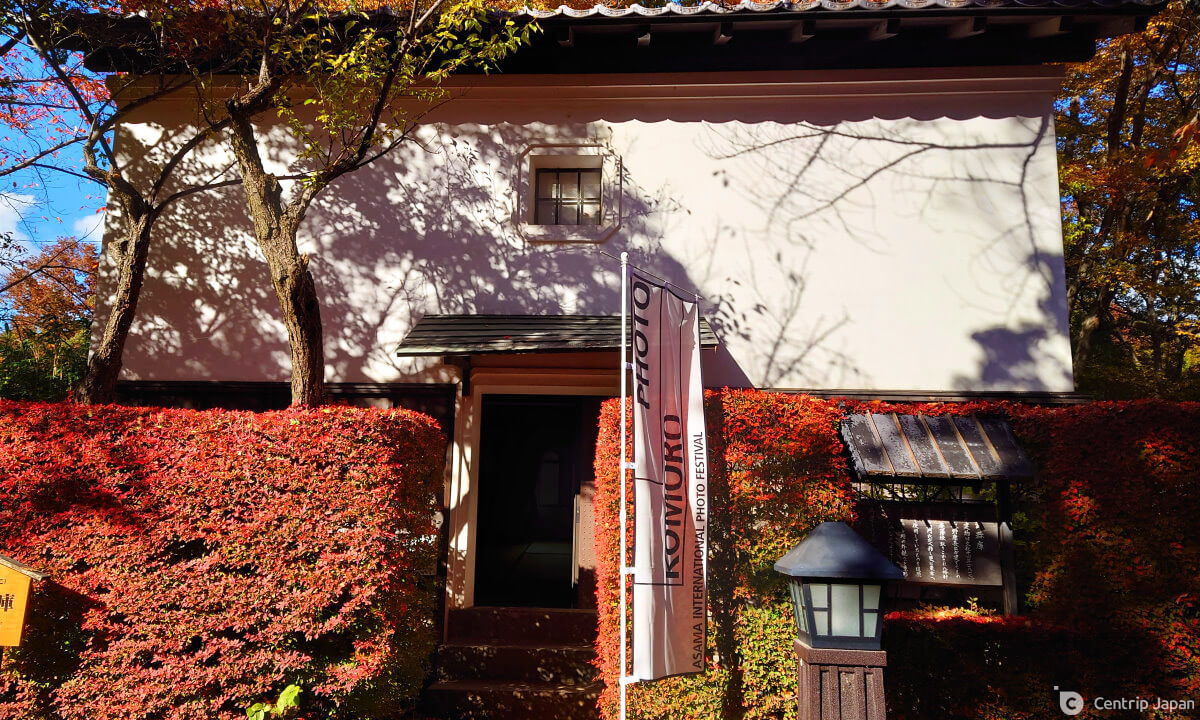 Armory
Armory
This sign commemorates the Buddhist priest Sodo Yokoyama (1907-1980), who preached Zen teachings to children using a grass whistle. He used to sing simply about complex ideas making them easy to understand. It plays a recording of one of his sermons.
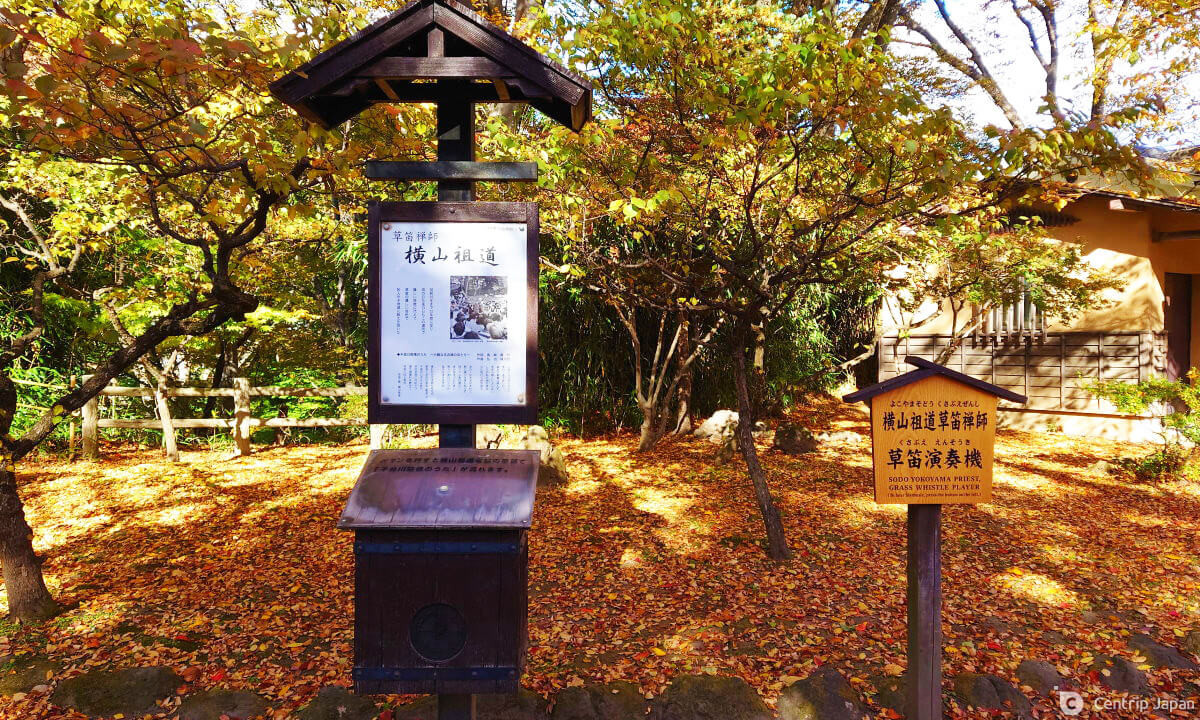 In memory of Yokoyama Sodo
In memory of Yokoyama Sodo
This spot was the resting place for the carriage of the castle lord.
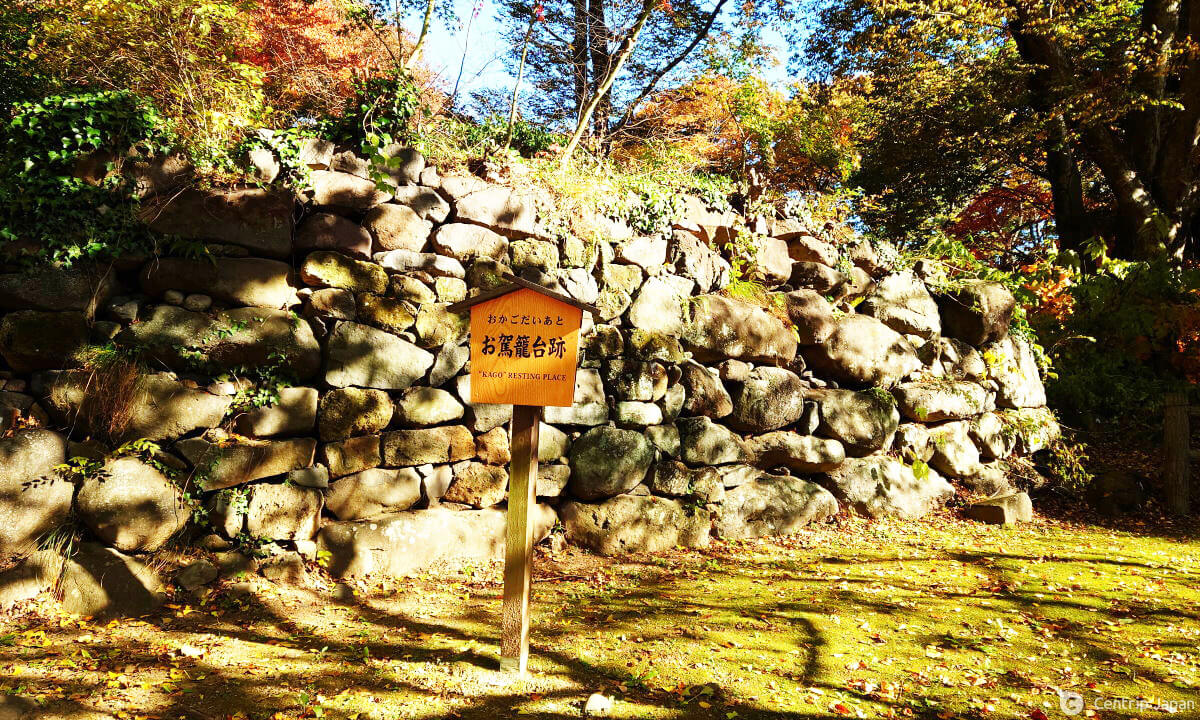 Carriage resting place
Carriage resting place
The remains of the castle keep.
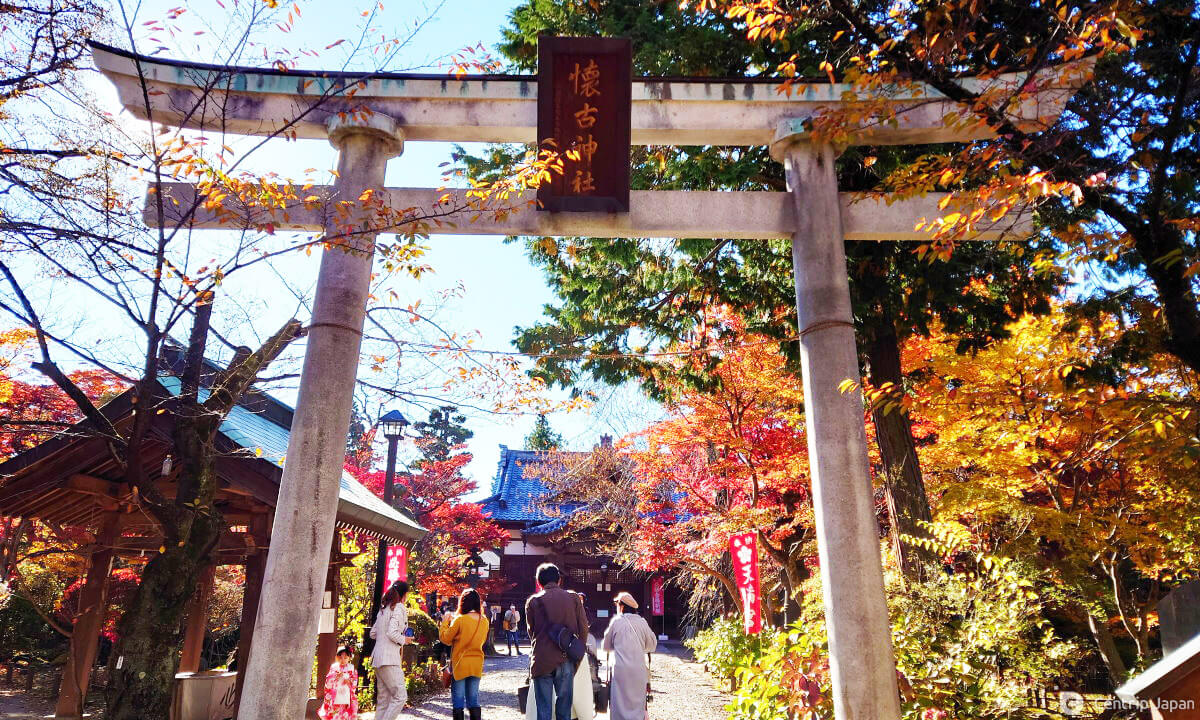 A shrine in the park
A shrine in the park
Here is a small Shinto shrine with a beautiful carp pond. It’s a picturesque corner of the park, ideal for taking evocative pictures like this one.
 Carp pond
Carp pond
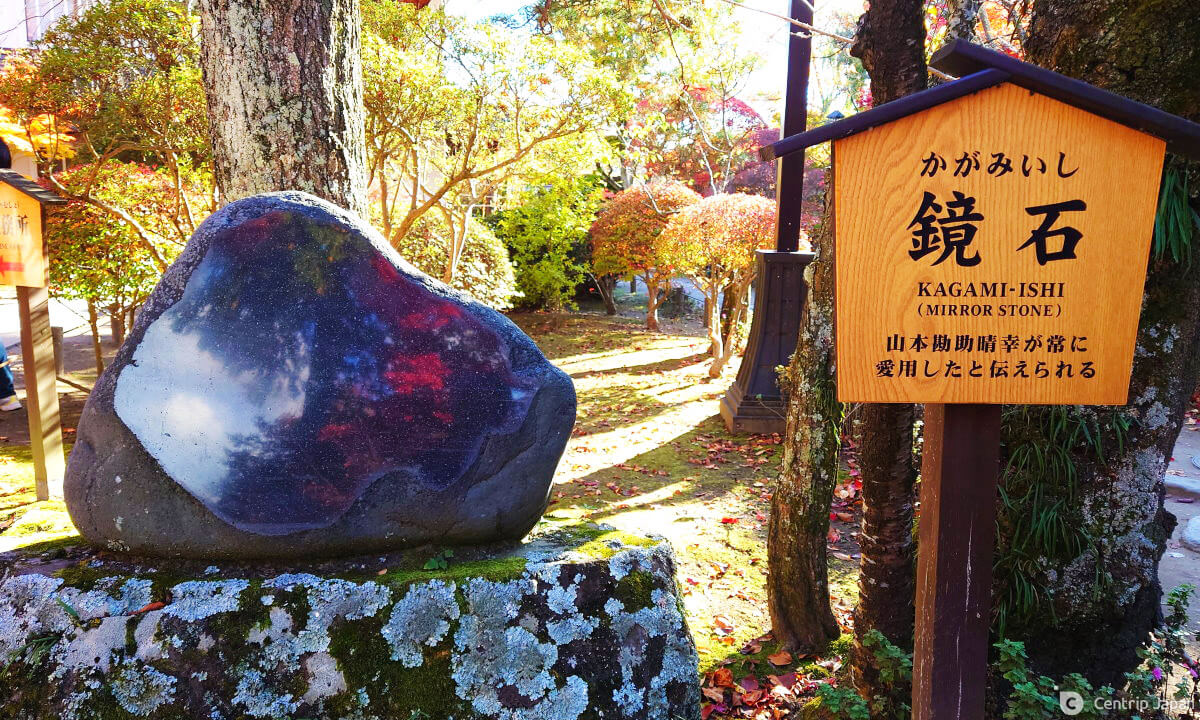 Mirror Stone
Mirror Stone
Here you can pick an omikuji (fortune-telling paper). Some are cute, like this one with the character Rilakkuma on it.
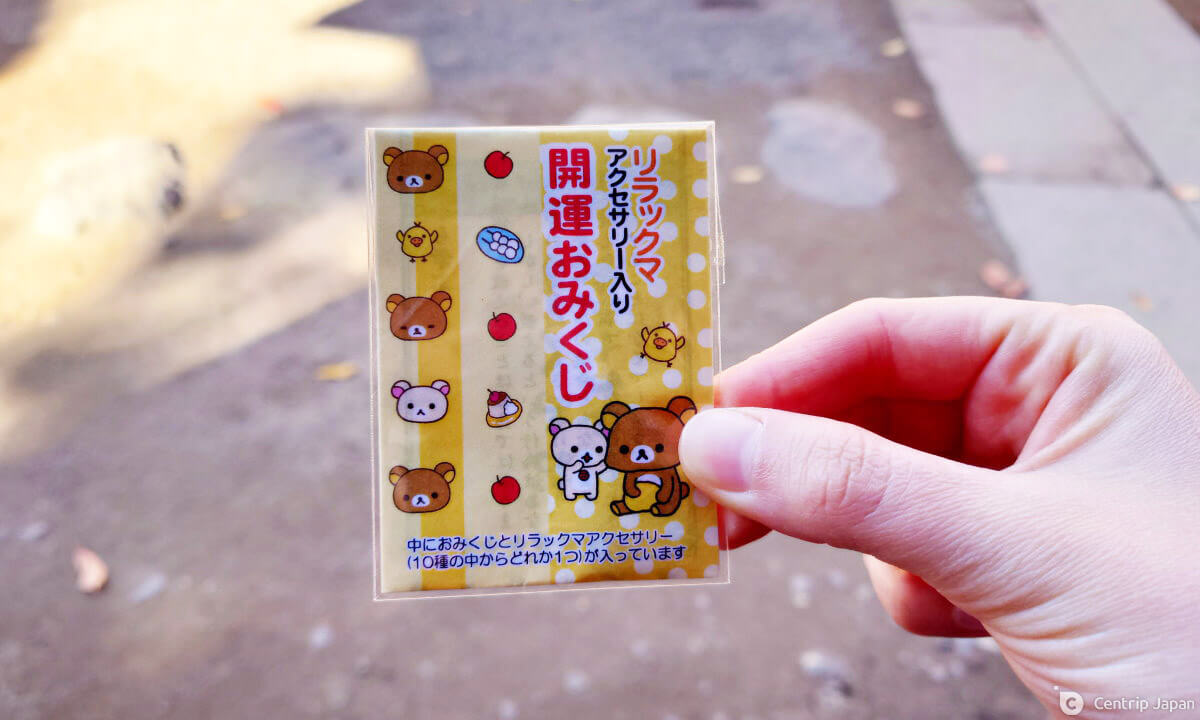 What lies in your future?
What lies in your future?
How to draw an omikuji:
Drawing omikuji cost differs depending on the shrine or temple but usually costs around 100 yen. Sometimes the omikuji is a little strip of paper, and sometimes it comes with a gadget or figurine like this one, making it slightly more expensive.
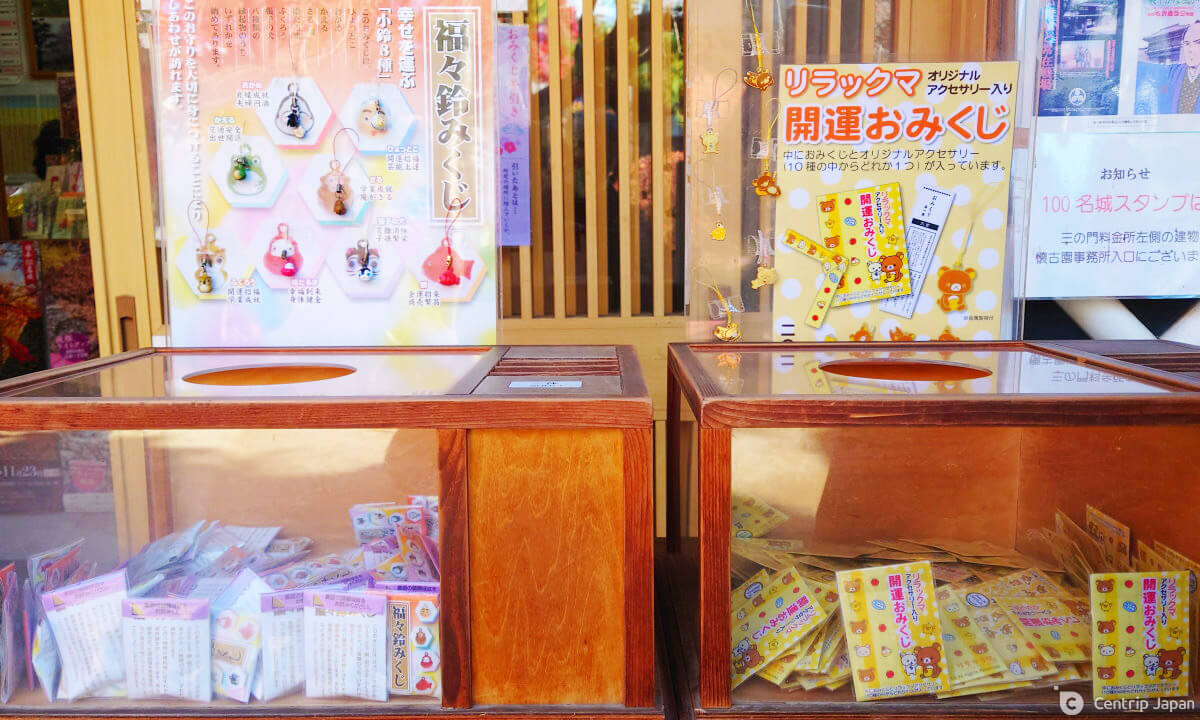 Fancy omikuji
Fancy omikuji
Sometimes you choose a stick and receive a paper omikuji corresponding to your choice. Other times, you can draw the omikuji directly from the box. After you read your omikuji, you can tie here in the temple.
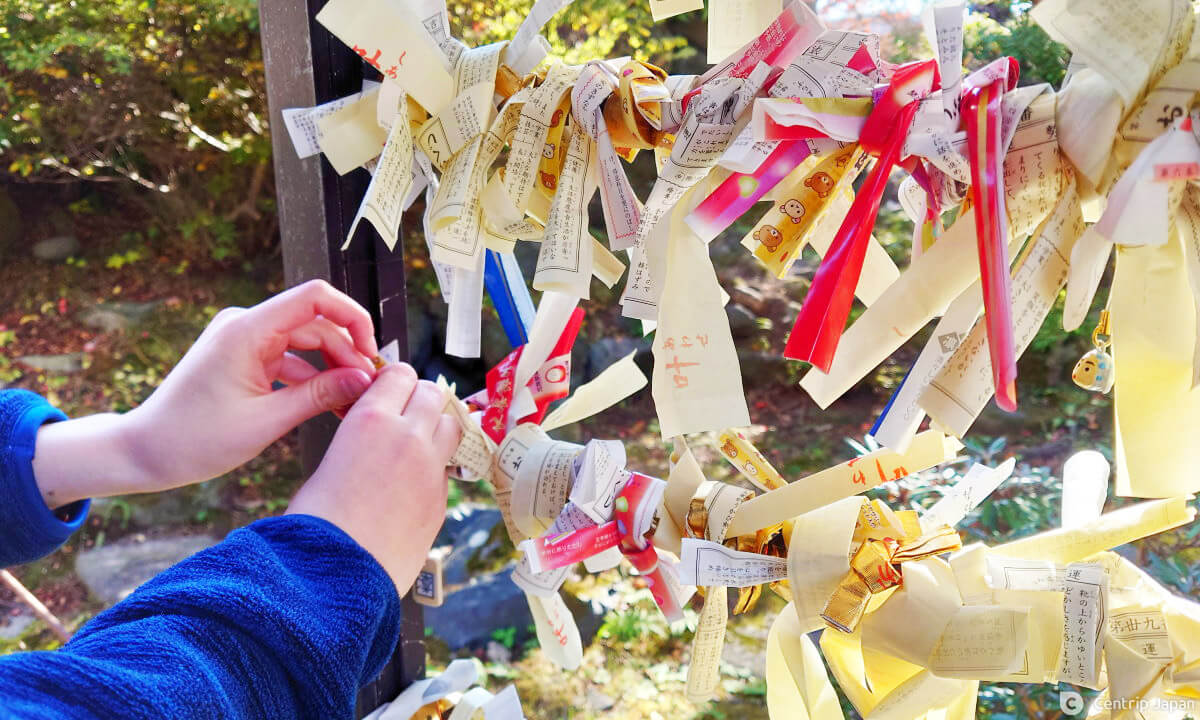 Tieing your omikuji
Tieing your omikuji
Teishaba Garden
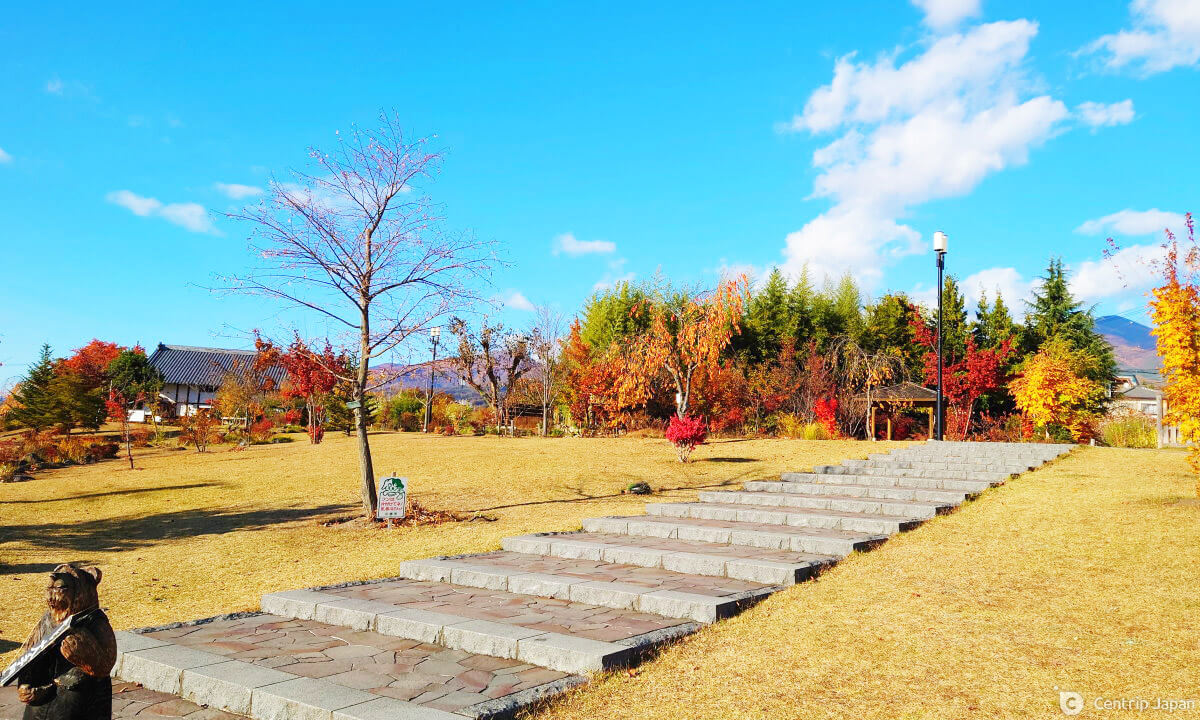 Teishaba Garden
Teishaba Garden
After a long walk in the park, you can enjoy a break at Teishaba Garden. Teishaba Garden is a small area near Komoro station that includes a botanical garden and some cafes. You can sit on the patio of one of the cafes and look at the beautiful flowers while enjoying a refreshing drink.
 Coffee on the patio
Coffee on the patio
At Teishaba Garden, you can also purchase flowers and plants.
Nunobiki Kannon
Nunobiki Kannon is a secret destination in Komoro, and it takes a long hike to get there. If you are on foot, you can get on a bus for Aguri-no-yu and take a 2 km hike. It will take you to a clearing amidst the mountains, where you will find a Tendai temple built over a cliff and a statue of Kannon, the bodhisattva of mercy.
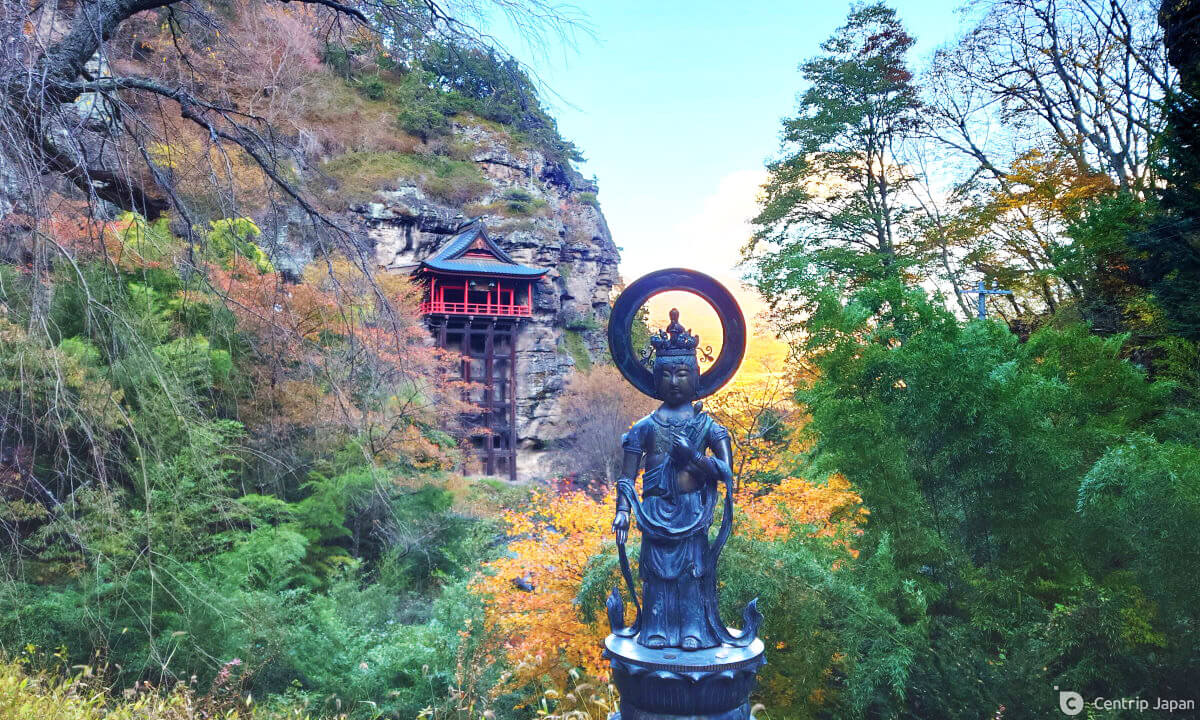 Nunobiki Kannon
Nunobiki Kannon
If you choose to visit here, make sure you go during the daytime, as the mountain road is steep and quite dangerous if you’re not paying attention. For drivers, be aware that the road to the clearing doesn’t have a guardrail.
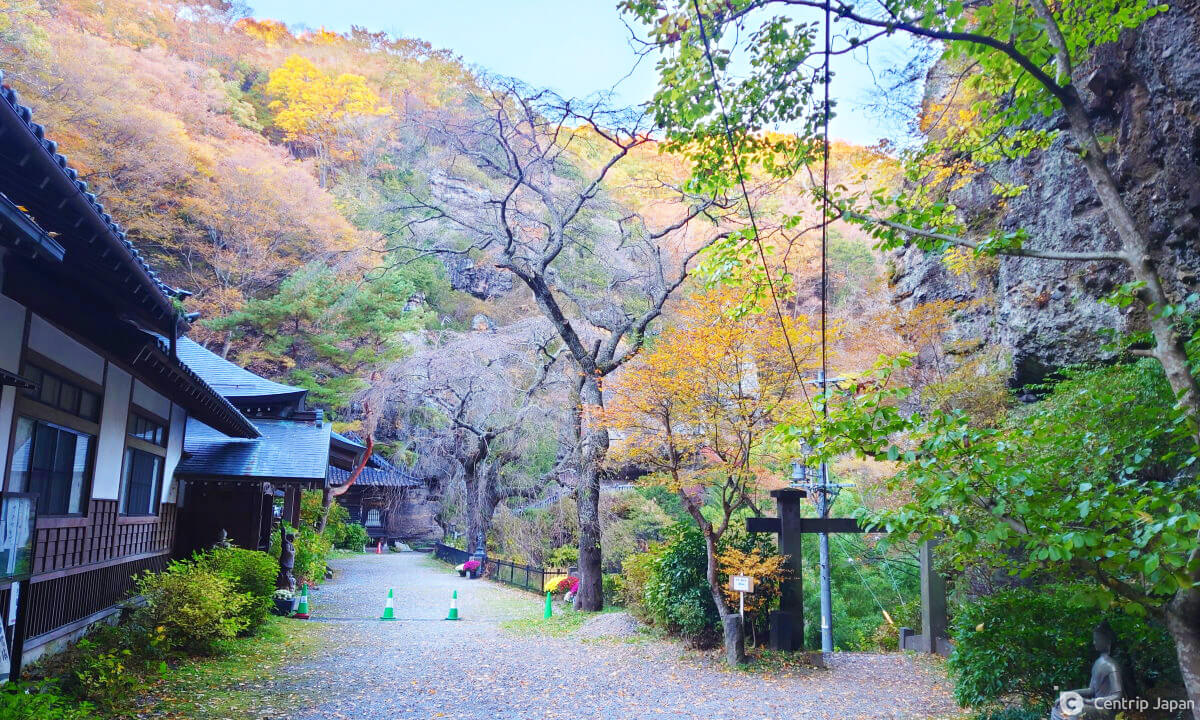 Amidst the mountains
Amidst the mountains
Wrap Up
Beautiful in Autumn, Komoro is a fabulous destination for leaf-peepers. It’s a small city, but it’s full of surprises like castle ruins, with beautiful parks and gardens. If you plan on visiting Nagano Prefecture, make sure you pay a visit!
Click here to get the latest information on Central Japan.Centrip Japan - Nagoya and Chubu Information

